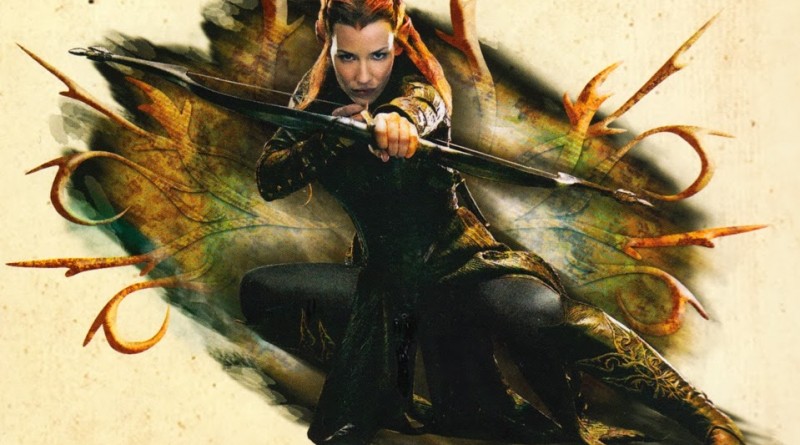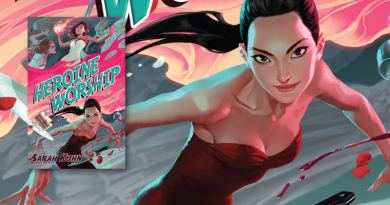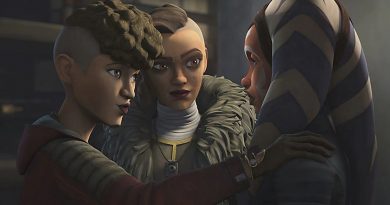Fangirls Around the Web: September 3, 2013
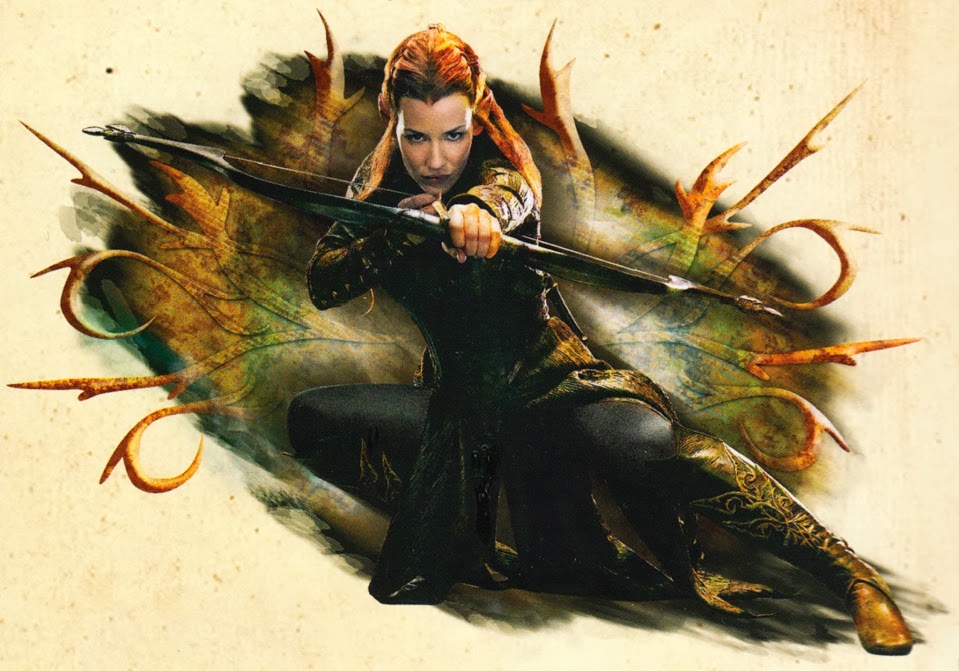
Catching up on fangirls and their heroines that have been spotted around the web recently.
First up, Tauriel takes aim. The above image comes from the just released tie-in book The Hobbit: The Desolation of Smaug Annual 2014. (via TheOneRing.net)
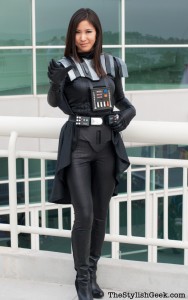
Her Universe previewed two new dresses: this time it’s all Fett. We’ve been keeping up with Fangirl of the Day happenings, and some new faces joined the roster: Meghan, Noelle, Mara Jade, Ainsley, Sam, Ellie, Sabrina, Natacha, Brianna, Kathy, Jael, Hannah, Kate, Cassandra, Hannah, Tali, Nicole, Tori, Natalie, Lisa, Janine, Reagan, Nicole, Anika, Jessica, Tülay, Cheralyn, Kristine, Felicia, Emily, and Nichole.
Lucasfilm Senior Events Lead Mary Franklin talked to the ForceCast about the ins and outs of making Star Wars Celebrations happen. At the Star Wars Blog, Chris Wyman shared Carrie Fisher’s surprise adventure around Celebration Europe II, during which she posed with many fans. If you’ve always wanted to play Darth Vader but were intimidated by the costume, the Stylish Geek has a tutorial on how to make the Lady Vader costume pictured at right.
Lake Bell talks about her directorial debut In a World…, which Vogue called “one of this year’s sharpest, freshest comedies.” As a voice actress she expressed her thoughts about how women present themselves vocally:
So if you work hard to make yourself look bright, and then you open your mouth and you sound like a little girl that no one can take seriously—you’re saying to everyone, “I’m less than. I’m submissive with that voice.” Some men might find it sexy. But I think women are doing to themselves as a disservice by speaking this way. In my film, I really wanted a powerful woman to give a speech about how omniscient voices are always done by men. Hollywood is not utterly male-dominated, but there are certain factions within every industry where there still are glass ceilings.
Over at Tor.com, Emily Nordling reviews Fangirl by Rainbow Rowell, which has been picked for this month’s LibraryReads List.
Fangirl is most certainly a love story, but it is more than that. It is a much-needed exploration of living as an introvert in an extrovert’s world, and of a young person’s willingness to accept others by accepting herself. Cath is a frustrating character in all the right ways. Awkward and oblivious, she bumbles through most social interactions with all the grace of an internet-induced hermit. Her relationship with Levi goes beyond romantic entanglement, too—Levi doesn’t read much, even has a learning disorder. In one of the novel’s final scenes, we find Cath reading the final Simon Snow novel out loud to Levi, desperately avoiding internet spoilers because of how long it’s taking. Accepting Levi—accepting people that are different or outside of her comfort zone—affords Cath a wealth of new experiences, even experiences of a part of her life that she had once viewed as just-for-her. It turns out, Rainbow Rowell seems to be saying, that everything we do is interpersonal—even how we experience so-called “escapism.”
The novel itself is interspersed with selections from the Simon Snow series and from Cath’s own fanfiction, lending even more validity to the form and function of fandom. Rowell has done her research. If you’ve read your share of fic—especially of the wizarding variety—you’ll recognize a lot of tropes, including the ones that make fanfic fun and readable. By the end, the fanfic starts to blend with the excerpts from the book, just like they both become a part of the narrative of Cath’s life.
Kay sent in this article from The Atlantic explaining how pink wasn’t always a color associated with girls. The Atlantic also had an interesting piece on how the sports young girls play affects the way they approach life. Kay also spotted another article at The Atlantic, “The Spectacular Now and the Problem with Geek Girls on Film,” which discusses the “fake geek girl” meme:
Perhaps that explains in part why the fake geek girl meme has such tenacity. Geeks, according to one way of thinking, have stories; women don’t. The identities seem to cancel out. To acknowledge that a girl is a geek, then, is to acknowledge that she’s the star of her own narrative, not the prize at the end for the guy who has overcome whatever it is guys are always overcoming. To fit into her secondary role in the conventional plot, Aimee has to become a more conventional girl. They call that a happy ending.
A few interesting articles provide further proof that women and stories with leading ladies can produce the numbers. Spotted on the The Mary Sue, “Tina Fey is Producing A New NBC Comedy With A Female Writer and Female Lead.” From the L.A. Times, feedback from the Venice Film Festival suggests Sandra Bullock and George Clooney’s Gravity will blow people’s minds. A new extended trailer clip, via Blastr, should get everyone in the mood. In its Trailer Report, The Hollywood Reporter reveals that the second Catching Fire trailer has shot to #1 in trailer view count with 5.6 million views. Sam Caflin thanks fans when the Hunger Games Facebook site passed 10 million Likes. Apparently Lionsgate’s continued engagement of the fanbase is working its magic. In case you missed it, here’s the Tribute Banner with the statement, “Remember who the enemy is.” 
At The Wrap, Rebecca Hall reminds the entertainment industry that strong female characters don’t just mean saints, but also villains. There are more and more signs that publishers, comics industry executives, and writers for television and movies haven’t grasped what fans are truly looking for. What to do about that is a problem women need to ponder…
Contributor Priya submitted a link to an article in Dribble of Ink about character growth, which references some Star Wars characters as examples. After reading the thoughts from the male writer and referencing advice from three male authors, it seems imperative that we see more women in positions where they are speaking knowledgeably about topics like female characters.
Monica Bartyzel at The Week wrote “Girls on Film: How sexism is destroying the comic book industry.” On the topic of rape in comics, she says:
But Millar is wrong. We have seen rape in comics before, and we’ve seen it a lot. In fact, rape shows up repeatedly in Millar’s work (Wanted, The Authority, Kick-Ass 2), which echoes a longer tradition of rape suffered by superheroines like Black Cat, Ms. Marvel, and Rogue. Rape is no more an unspeakable taboo in comics culture, where the industry is overrun with continual sexual harassment and rape threats, than it is in real life.
As Wired editor (and previous Comics Alliance editor-in-chief) Laura Hudson correctly argues, there’s only one reason comics depict rape in the stories: To “piss off the male character. It’s using a trauma you don’t understand in a way whose implications you can’t understand, and then talking about it as though you’re doing the same thing as having someone’s head explode. You’re not. Those two things are not equivalent, and if you don’t understand, you shouldn’t be writing rape scenes.”
Millar’s comparison is the same false equivalency that plagues discourse on racial and sexual inclusivity in comics — stubborn, willful ignorance that blocks legitimate growth and critique. As Joseph Hughes noted at Comics Alliance, these continual plots of women being raped to incense male heroes are sold to societies in which rape is a widespread endemic. “In Scotland, where Millar resides, incidences of rape and attempted rape increased by 15 percent from 2011-12 to 2012-13. […] These are not statistics one typically associates with decapitation.”
And on sexism in the industry:
“The decision to stay within the narrow lanes of your own fantasies is a choice, not biological determinism,” wrote Alyssa Rosenberg. Whether these men are actually sexist, their approach to comics — a medium which they continue to help define — clearly is. It isn’t just a matter of what ends up on the page, but how they respond to their audience and critics. They are, quite clearly, discriminating and perpetuating a false discourse about diversity in comics — like the idea that politics, feminism, and strong heroines never sell. It’s a strange rigidity coming from men who are paid to be creative and stretch the boundaries of their imaginations.
It’s also a rigidity that’s killing the genre. The comic book world is caught in a “death spiral.” Sales are mere fractions of what they were — but instead of expanding the reach, many creatives are stubbornly narrowing it. “I have long maintained,” Laura Hudson once wrote, “that to bring in more female readers, superhero comics don’t even need to specifically target women as much as they need to not actively offend them. […] Female characters are only insatiable, barely dressed aliens and strippers because someone decided to make them that way. […] It isn’t an inviolable reality, especially in a comic book universe that has just been rebooted.
Over at Eleven Thirty-Eight, Becca Hughes wrote a great opinion piece on the Jedi relationship with the Force, specifically how it has been presented in the Expanded Universe. On Jaina, she says:
In Dark Journey by Elaine Cunningham, on the other hand, Jaina, finds no real answers in her would-be mentor, Kyp Durron. The structure of authority fails her and she’s left boundaryless and angry. It’s often criticized as a weak attempt to portray a fall to the dark side, but like her brother’s novel, I think it was never a tale of falling, it was about negotiating uncertainty and darkness. She acquires a working knowledge of Vong technology and pioneers military tactics that revolutionize anti-Vong strategy, but acquires this information in a variety of questionable ways.
In the end, there is no grand moment of revelation, there is simply Jaina, deciding not to die, and deciding not to be angry any more. There is no long period of ethical introspection over the ways in which she behaved previously. Rather than a failing in the narrative, I think this can be viewed as an interesting parallel. Like her brother, she learns, in the end, she can only choose, act, and live with what she has done, doing her best with it in the future.
There are strong messages about existing in the present, without allowing the past or possible futures to rule you. You cannot fear the unknown, we are told, and when faced with it, action, not reflection, is presented as the best course. It’s about how you deal with what you do not know, or cannot fix.
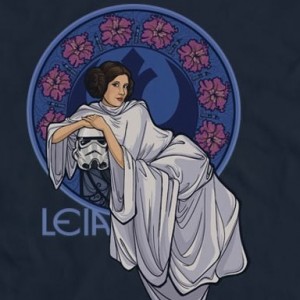 I’ve stated previously that Jaina’s journey was under-appreciated within the New Jedi Order. Therefore it’s nice to see more discussion on the topic. The entire article is worth a read.
I’ve stated previously that Jaina’s journey was under-appreciated within the New Jedi Order. Therefore it’s nice to see more discussion on the topic. The entire article is worth a read.
From fictional heroines of Star Wars to real life fangirls, Amy Geek’s engagement photoshoot was featured over at When Geeks Wed.
How about this beautiful Le Fleur De Leia shirt from We Love Fine that we spotted in the works back in our Fangirls Around the Web: July 15, 2013 edition?
Finally, if we can’t laugh at our own fangirlism, we’re not doing it right. Here’s a video Leigh Lahav that take a humorous look at fangirls of all types.
Tricia Barr took her understanding of brand management and marketing, mixed it with a love of genre storytelling, and added a dash of social media flare to create FANgirl Blog, where she discusses Star Wars, fandom, and strong female characters. She also writes about Star Wars for Random House’s science fiction and fantasy blog Suvudu.com and Star Wars Insider magazine and is a contributor for Her Universe’s Year of the Fangirl.
Tricia is putting the finishing touches on her first novel, Wynde – a military science fiction with a fantastical twist that features heroines Vespa Wynde and Gemini Reed. For excerpts and tales of her adventures in creating a fictional universe, hop over to TriciaBarr.com.
For updates on all things FANgirl follow @FANgirlcantina on Twitter or like FANgirl Zone on Facebook. At times she tries the Tumblr.
- Let’s Win the Season of the Force Scavenger Hunt - April 10, 2024
- Hyperspace Theories: Metamorphosis and Sacrifice in The Bad Batch Season Two - March 22, 2024
- Fangirls Going Rogue: The Bad Batch Returns - March 1, 2024

